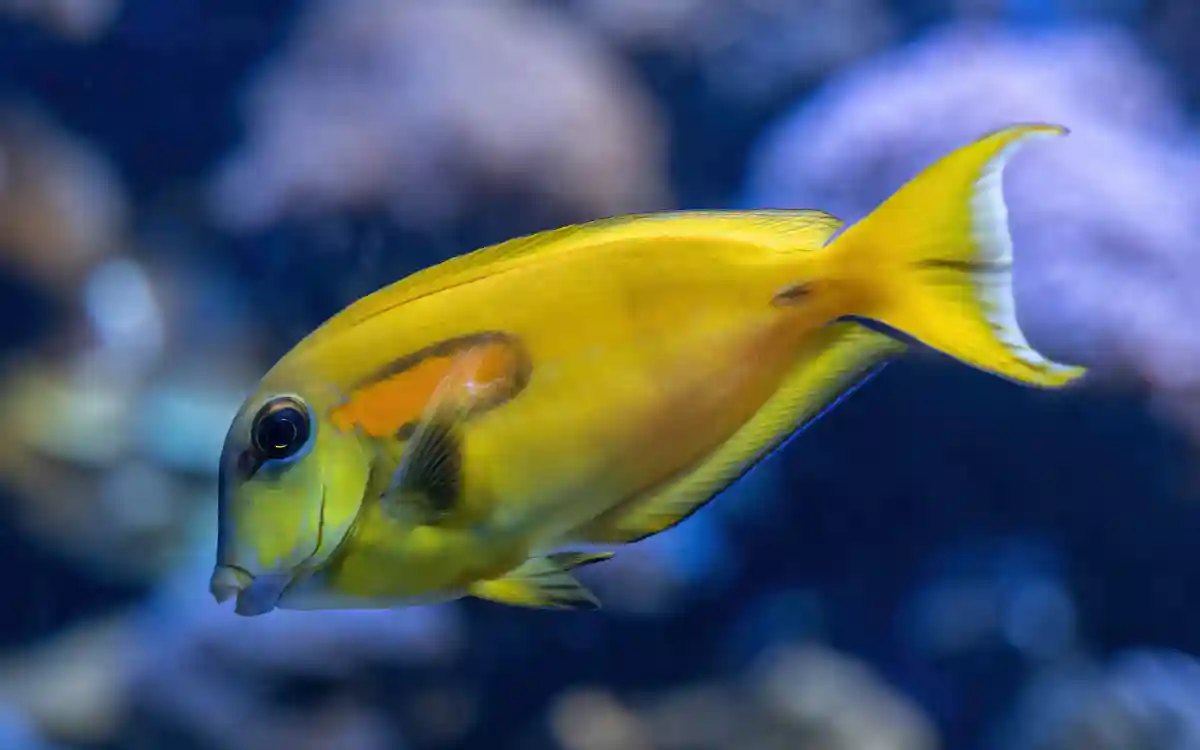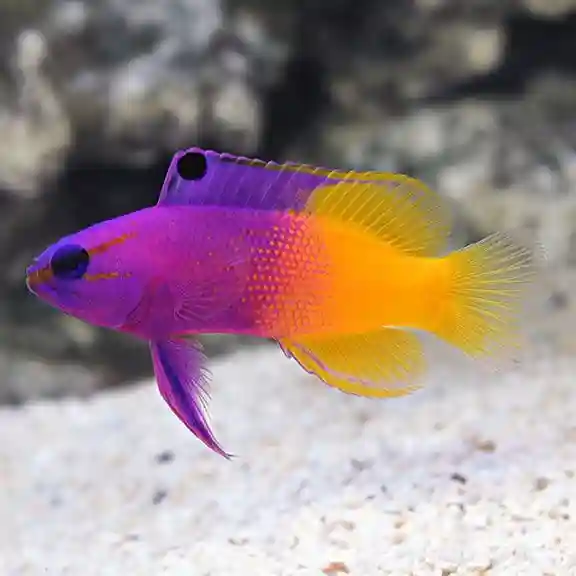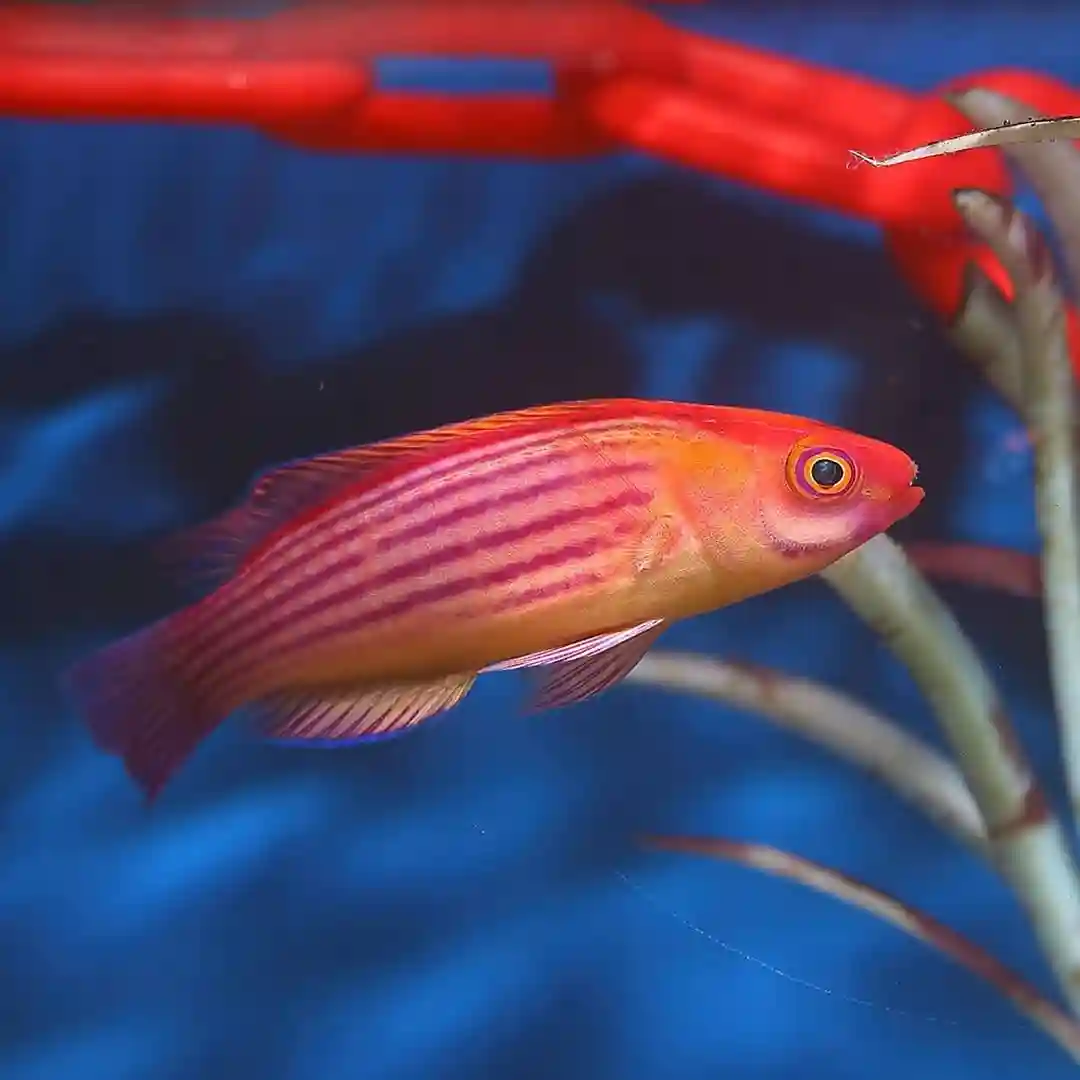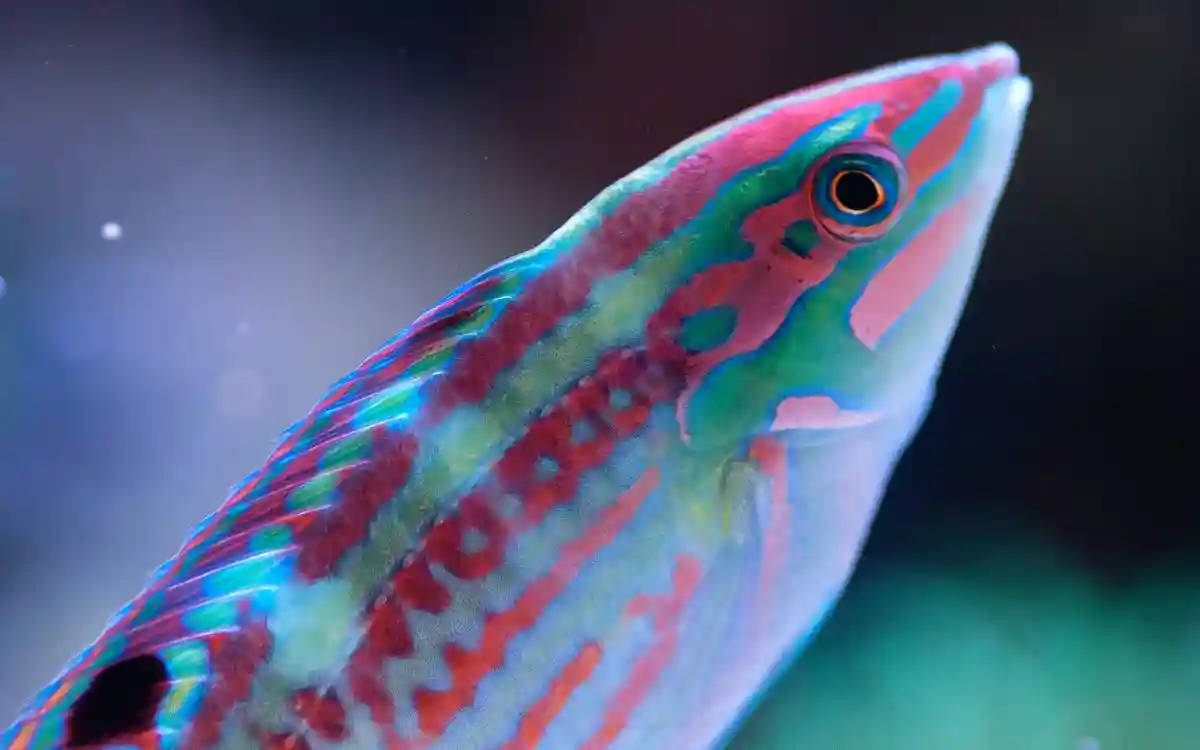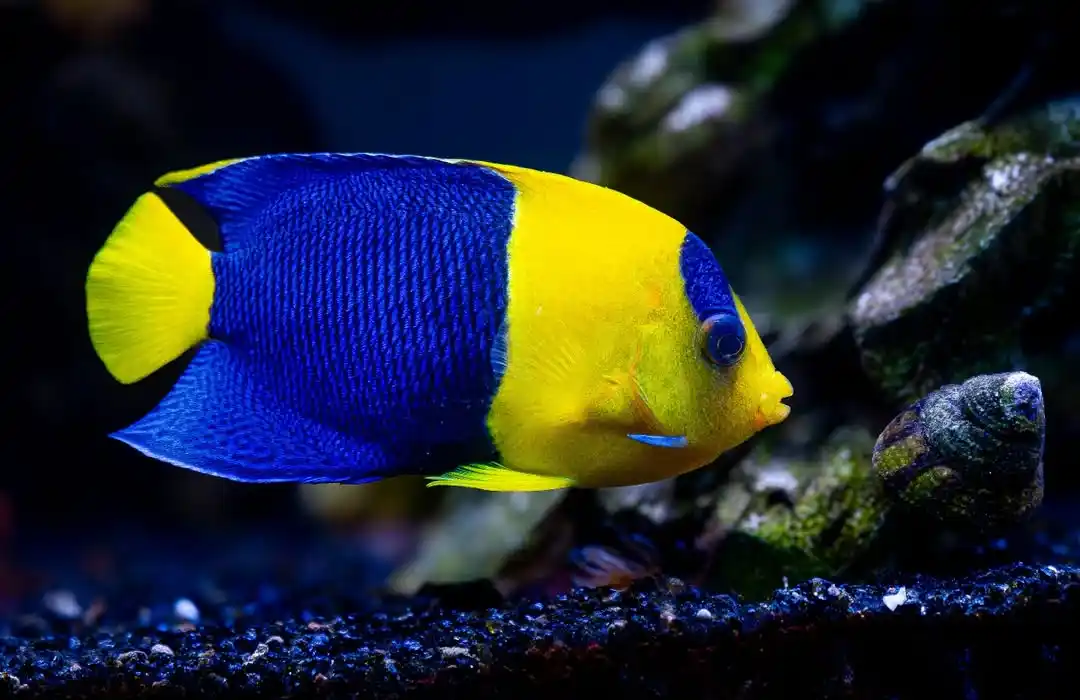Purple Firefish 101: Care, Diet, Tank Mates & Reef Safety
The Purple Firefish (Nemateleotris decora) is one of the most stunning yet underrated additions to saltwater aquariums. With its iridescent purple hue, long dorsal fin, and calm behavior, this reef-safe fish is a favorite among beginners and nano reef keepers. It’s peaceful, hardy, and easy to care for—as long as you meet its few specific needs. In this care guide, you’ll learn how to keep your Purple Firefish happy, healthy, and beautifully colored for years.

Quick Species Profile
| Trait | Details |
| Common Name | Purple Firefish |
| Scientific Name | Nemateleotris decora |
| Origin | Indo-Pacific |
| Size | Up to 3.5 inches |
| Lifespan | 3–5 years |
| Temperament | Peaceful, shy |
| Diet | Carnivorous |
| Tank Size | Minimum 20 gallons |
| Reef-Safe | Yes |
| Care Level | Easy |
Appearance and Behavior
The Purple Firefish lives up to its name with a striking body that fades from bright white to purple, accented by flashes of yellow and deep magenta. A tall, sweeping dorsal fin gives it an elegant look, especially as it hovers in the water column.
This species is naturally shy. It spends much of its time near the entrance of a chosen bolt-hole (a crevice or tunnel in live rock), darting back if startled. While it’s not aggressive, it may become territorial with its own kind, especially in smaller tanks. These fish are best kept singly unless you acquire a bonded pair.
Once it feels secure, the Purple Firefish becomes more active and visible. Keeping lighting moderate and minimizing tank disturbances helps build its confidence.
Tank Size and Setup
Despite their small size, Purple Firefish appreciate horizontal swimming space and plenty of hiding spots. A 20-gallon tank is the minimum, but if you’re housing them in a community setup, a slightly larger tank will help reduce territorial issues.
The tank should include live rock with plenty of crevices and shaded areas for shelter. An open aquascape with no cover will increase stress and hiding behavior. Moderate water flow is ideal, but avoid placing strong currents near their retreat zones.
Because this species is a known jumper—especially when startled—it’s essential to use a tight-fitting lid or mesh screen to prevent accidents.
Water Parameters and Maintenance
Maintaining stable water conditions is more important than chasing perfect numbers. Aim for:
- Temperature: 72–78°F
- pH: 8.1–8.4
- Salinity: 1.020–1.025 SG
- Nitrate: Under 20 ppm
A weekly water change of 10–15% helps keep nutrient levels balanced. Good oxygenation, achieved through surface agitation or an air stone, is helpful in reducing stress and supporting immune health.
Diet and Feeding Tips

Purple Firefish are carnivores that thrive on a varied diet of small, meaty foods. In the wild, they feed on plankton drifting through the water column. In captivity, they do best with:
- Frozen mysis shrimp
- Brine shrimp
- Finely chopped seafood
- High-quality marine micro pellets
Feed once or twice daily in small portions. Target feeding near their bolt-hole helps ensure they don’t miss out in a busy tank. Some fish may be shy eaters at first but will warm up to a consistent feeding schedule.
To maintain vibrant colors, rotate their food sources and supplement with nutrient-rich choices like spirulina-enriched brine shrimp.
Compatibility and Tank Mates
The Purple Firefish is peaceful and gets along with a wide range of reef-safe species. It prefers slow-moving, non-aggressive tank mates that won’t compete aggressively for food.
Good companions include clownfish, royal grammas, small wrasses, gobies, banggai cardinalfish, and chromis. Avoid housing with larger or more aggressive fish such as dottybacks, large angelfish, or triggers.
Never house multiple Purple Firefish unless you are sure they are a bonded pair. Otherwise, territorial fights can break out—even in seemingly peaceful fish.
For best results, add the Firefish early during stocking. This allows it to establish territory before more dominant species are introduced.
Reef Compatibility
The Purple Firefish is 100% reef-safe. It does not nip at corals, disturb invertebrates, or interfere with coral placement. This makes it an ideal choice for nano reefs or SPS/LPS coral tanks where stability and compatibility are key.
It also won’t harass shrimp, crabs, or snails—making it safe around your clean-up crew.
The only issue some reefers face is their tendency to hide if stressed, which can create concern for new keepers. Providing enough cover and a calm environment usually brings them out into view within a few days.
Health and Common Diseases
Though hardy, the Purple Firefish can suffer from stress-related illnesses if conditions are poor or aggression is present. Marine ich and fin rot are the most common issues, especially when newly introduced or poorly quarantined.
Symptoms to watch for:
- Torn or frayed fins
- Faded coloration
- Excessive hiding
- Loss of appetite
These signs can often be reversed by improving water quality and removing sources of stress. Quarantine any new additions for at least 2 weeks and avoid overstocking the tank.
Stable salinity, low nitrates, and low aggression go a long way in keeping Firefish healthy.
Breeding in Home Aquariums
Breeding Purple Firefish in captivity is possible, but it’s extremely rare. They form monogamous pairs and typically spawn in crevices, guarding the eggs until they hatch. However, the larvae are planktonic and nearly impossible to raise without a specialized setup.
If you plan to keep a pair, ensure they were bonded before purchase. Adding two randomly selected individuals often results in fighting rather than pairing.
Fun Facts About Purple Firefish
- This species is often confused with the Firefish Goby (Nemateleotris magnifica), but it has more vivid purple tones and a different fin structure.
- Firefish can rotate and dart mid-water like a helicopter, which helps them evade predators.
- Their long dorsal fin is not just for show—it helps them communicate and navigate narrow spaces.
- Though small, they’re often the first fish noticed in a reef tank due to their shimmer and poise.
- They may “vanish” for days at a time into rockwork if overly stressed or bullied.
Frequently Asked Questions
Is the Purple Firefish aggressive?
No, it is peaceful and shy. It may show minor territorial behavior if another fish invades its space, but it avoids confrontation.
Can I keep more than one Purple Firefish?
Only if they are a mated pair. Two unpaired individuals may fight, especially in small tanks.
Is this species reef-safe?
Yes, it will not bother corals, clams, or invertebrates.
Does it jump out of tanks?
Yes. Always use a secure lid or mesh top. They jump when startled or chased.
What should I feed a Purple Firefish?
Frozen mysis or brine shrimp, chopped marine foods, and micro pellets. Feed in small amounts once or twice daily.
Final Thoughts
The Purple Firefish is a calm, colorful gem in the saltwater aquarium world. Its gentle behavior, small size, and reef-safe nature make it ideal for nano tanks and peaceful reef communities. While its shy personality may mean it spends time near rockwork, a well-fed and stress-free Firefish becomes a confident, visible presence in your tank. If you’re looking for a low-maintenance saltwater fish that adds beauty without trouble, the Purple Firefish is a perfect choice.

